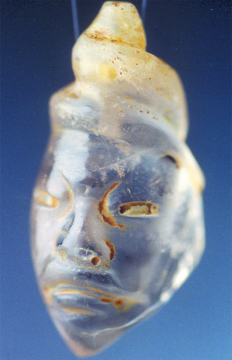
Geotimes Home | AGI Home | Information Services | Geoscience Education | Public Policy | Programs | Publications | Careers

 Dating archaeological
artifacts is rarely an easy task, especially those from 50,000 to 100,000 years
ago — a time period for which many otherwise reliable dating methods are
not very accurate. Assigning dates to artifacts from that period, called the “chronological
gap,” may now be somewhat easier, however, thanks to a new method involving
quartz crystals.
Dating archaeological
artifacts is rarely an easy task, especially those from 50,000 to 100,000 years
ago — a time period for which many otherwise reliable dating methods are
not very accurate. Assigning dates to artifacts from that period, called the “chronological
gap,” may now be somewhat easier, however, thanks to a new method involving
quartz crystals. |
Geotimes Home | AGI Home | Information Services | Geoscience Education | Public Policy | Programs | Publications | Careers |